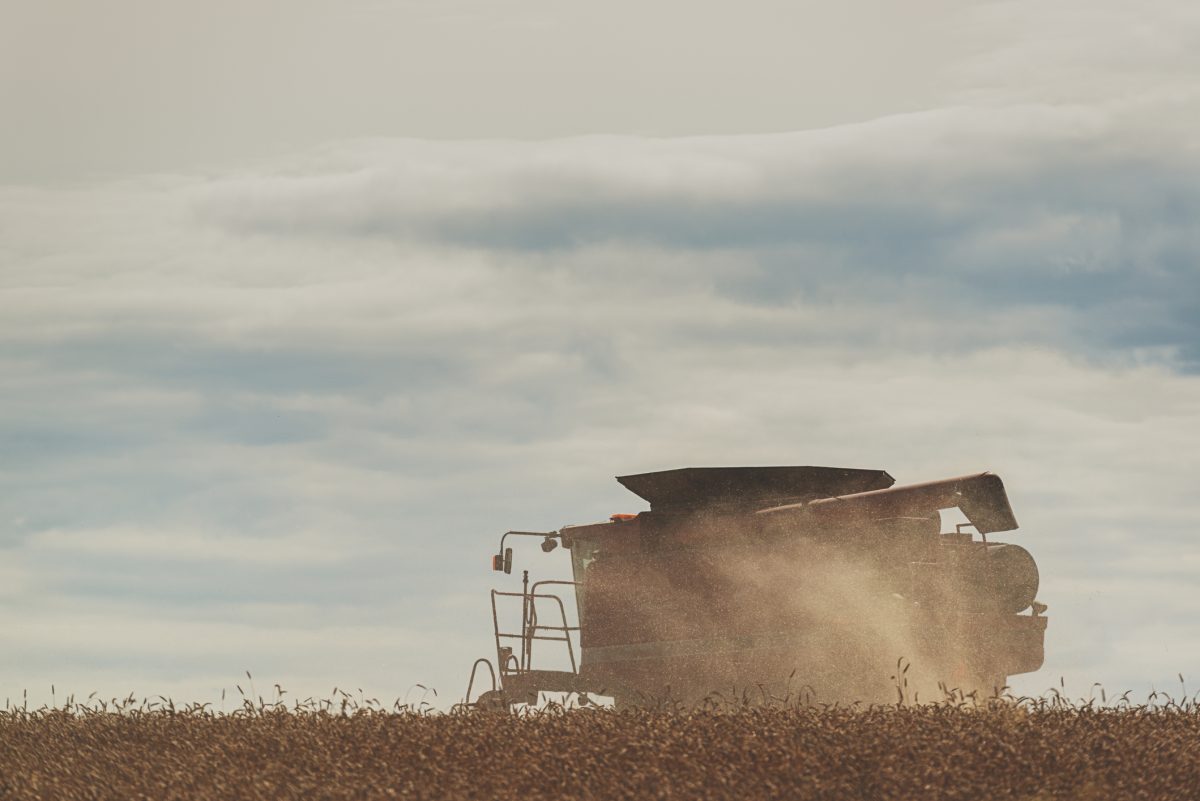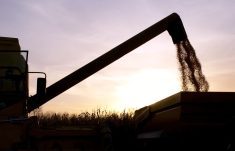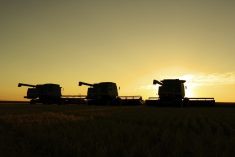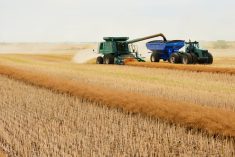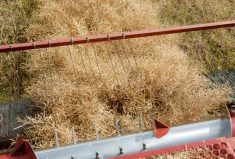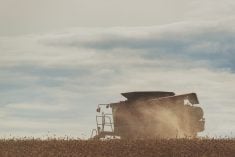Glacier FarmMedia — Alberta’s crop harvest is virtually complete, but crop quality is a concern as the growing season comes to a close.
The province’s agriculture department reported 99.4 per cent of Alberta’s major crops were combined as of Oct. 14, 3.1 points more than in the previous week, compared to the five-year average of 97 per cent and the 10-year average of 83 per cent. The northwest region’s harvest was 100 per cent complete, while the central region was at 98.9 per cent. All other regions were within one point of finishing operations.
Read Also

CBOT Weekly: Watching for Chinese soybean purchases
As activity at the Chicago Board of Trade shifts into holiday mode through the New Year, independent analyst Terry Reilly pointed to three things to watch over the next few weeks.
The harvests for all major crops were either completion or less than a point away from completion, except for canola at 98.5 per cent.
Despite recent rain and snowfall in some areas, the added moisture wasn’t enough to improve fall-seeded crop quality provincewide. The northeast and northwest regions saw improvement from the past week, while the south region was steady and the central region declined. Crops in the south region were rated at 51 per cent good to excellent, compared to 26 per cent in the northwest, 16 per cent in the central region and 11 per cent in the northeast. There were no fall-seeded crops reported in the Peace region.
Provincially, surface moisture conditions were down slightly to 16 per cent good to excellent, below the five-year average of 40 per cent. Regionally, surface moisture conditions rated good to excellent were at 22 per cent in the south region, nine per cent in the central region, seven per cent in the northeast, 22 per cent in the northwest and 29 per cent in the Peace region.
Sub-surface moisture conditions rated good to excellent remained steady at 18 per cent, below the five-year average of 37 per cent. Regional good to excellent ratings for sub-surface soil moisture was at 23 per cent in the south, 13 per cent in the central, 10 per cent in the northeast, 19 per cent in the northwest and 30 per cent in the Peace region. Most parts of the province are entering winter with dry soil conditions and average or higher winter snowfall, as well as spring precipitation will be needed to replenish soil moisture and support crop and forage growth in the coming season.
Most producers had already begun moving cattle off pastures and feeding livestock at home. Provincial pastures with good to excellent growth conditions declined by two points to 15 per cent, below the five-year average of 29 per cent. Regional good to excellent pasture conditions were at 29 per cent in the south region, five per cent in the central region, one per cent in the northeast, 14 per cent in the northwest, and 27 per cent in the Peace region.
Provincially, forage reserves were rated at 10 per cent deficit, 19 per cent possible shortfall, 62 per cent adequate, and nine per cent surplus. The feed grain reserves were rated at three per cent deficit, nine per cent possible shortfall, 76 per cent adequate and 12 per cent surplus.


